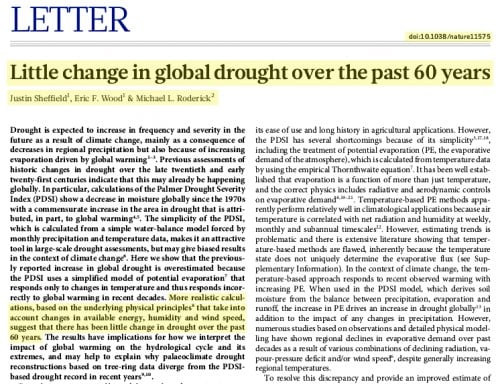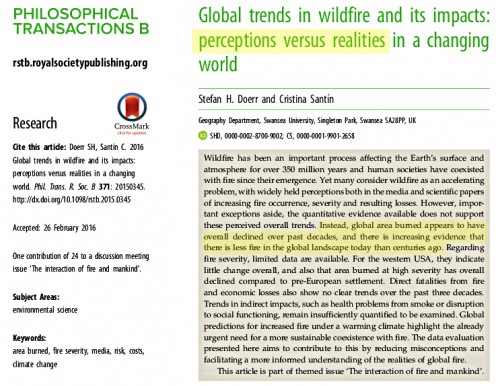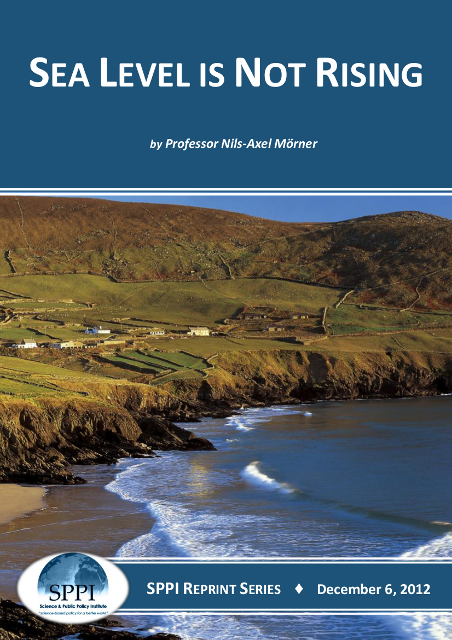Fourth National Climate Assessment-Things You Should Know About Its Creation

The Fourth National Climate Assessment is a two-volume report -- the fourth of its kind, congressionally mandated by law through the Global Change Research Act of 1990, and produced under the US Global Change Research Program (USGCRP).
USGCRP in Federal Government Context

Development of the report was overseen by the Subcommittee on Global Change Research (SGCR) through a Federal Science Steering Committee (SSC), made up of representatives from USGCRP agencies and appointed by the Subcommittee on Global Change Research, for which the National Oceanic and Atmospheric Association (NOAA) served as the administrative agency, by establishing the report's procedures.
Federal Law
The Global Change Research Act of 1990 (which mandates the climate report) is 104 STAT. 3096 PUBLIC LAW 101-606 --NOV. 16, 1990. It was enacted:
To require the establishment of a United States Global Change Research Program aimed at understanding and responding to global change, including the cumulative effects of human activities and natural processes on the environment, to promote discussions toward international protocols in global change research, and for other purposes.
In Sec. 101. Findings and Purpose (a) (2), the following statements appear:
... human-induced changes, in conjunction with natural fluctuations, may lead to significant global warming and thus alter world climate patterns and increase global sea levels. Over the next century, these consequences could adversely affect world agricultural and marine production, coastal habitability, biological diversity, human health, and global economic and social well-being.
Enabling Spread of False Information
Although natural changes to climate are mentioned, the overriding tone seems to echo greater concerns about human-caused changes, thus establishing (in American law) a priority focus on human causes, similar to the priority focus of the United Nations Intergovernmental Panel on Climate Change (IPCC).
This association between a federal law and an international directive is shown by the fact that the Chairperson of the Federal Science Steering Committee, of the Subcommittee on Global Change Research, that oversaw development of the Fourth National Climate Assessment, was a lead author for the IPCC's Third, Fourth, and Fifth Assessment Reports (2001, 2007, and 2014) and the IPCC Technical Paper on Water (2008).
Also, the Executive Director of USGCRP [remember, the umbrella organization overseeing the report] is the person who led US Government reviews of the International Panel on Climate Change (IPCC) fifth assessment report from Working Group 1 and has been a member of the US review team for all of the other IPCC Working Group products.
Even more, the National Oceanic and Atmospheric Administration (NOAA) established the procedures for the Fourth National Climate Assessment.
NOAA seems to find itself amid controversy about handling temperature data in a way that insures findings of "global warming".
Should an agency in the midst of such controversy be the agency establishing procedures for a national climate assessment? -- this seemingly would extend such controversy to a major climate report.
Furthermore, clear executive ties to the IPCC and its dubious emphasis on climate models, as opposed to actual observations, seemingly would add further controversy. Thus, the fact that US law and IPCC directives both shine a light on human causes, is no coincidence. It is as though IPCC directives have tentacles into American politics, which speaks to the unquestioned reach of the IPCC.
False Statements
The first few sentences of summary findings from Volume 2 of the Fourth National Climate Assessment make blatantly false statements about extreme climate events. These false statements appear to serve as main supporting facts for the report's overall claim of human-caused disruption:
- "More frequent and intense extreme weather and climate-related events, as well as changes in average climate conditions, are expected to continue to damage infrastructure, ecosystems, and social systems that provide essential benefits to communities."
- "In the absence of significant global mitigation action and regional adaptation efforts, rising temperatures, sea level rise, and changes in extreme events are expected to increasingly disrupt and damage critical infrastructure and property, labor productivity, and the vitality of our communities. "
Such statements ignore the actual facts that extreme trends in droughts, tornadoes, hurricanes, wildfires, snowfall, and sea-level rise do not exist.
Extreme Trend in Droughts Non-existent


Extreme Trend in Hurricanes Non-existent


The ACE Index is a standard measure of hurricane intensity -- "Accumulated Cyclone Energy". The red horizontal lines show no trends here.
Extreme Trend in Tornadoes Non-existent


Extreme Trend in Snow Cover Non-existent

Extreme Trend in Wildfires Non-existent

Extreme Trend in Sea-Level Rise Non-existent




Conclusion
The Fourth National Climate Assessment, therefore, falls apart because of erroneous claims alone.
Amazingly, data from the very organization (NOAA) that established procedures for the report contradict the report's major claims. This seems to be a clear indicator that the Fourth National Climate Assessment allows politics to undermine real-world observations, thereby reducing its credibility to zero.
© 2018 Robert Kernodle








